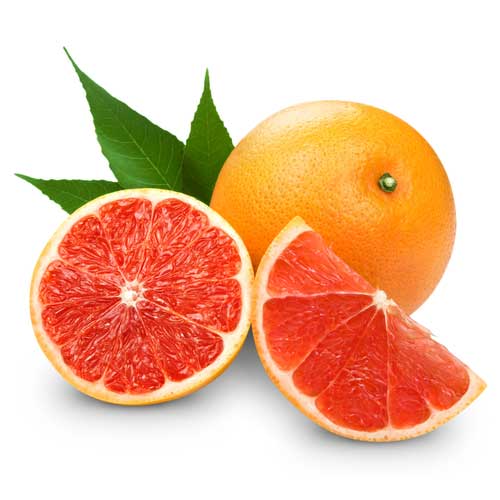
What’s the deal with negative calorie foods? Read enough diet articles and you’ll see people, even dieticians, espousing the benefits of eating negative calorie foods. Negative calorie foods? How could food have less than zero calories? The idea is that some foods are so low in calories that your body has to expend more energy to digest, break down and absorb them than is actually in the food. Supposedly, if you eat these foods and you’re getting a “free lunch” from a calorie standpoint. Is there any truth to this idea?
Where the Idea of Negative Calorie Foods Falls Short
No doubt some foods are very low in calories, often because they have a high water and fiber content. An example of a so-called negative calorie food is celery. Due to the amount of water in celery and the fact that most of the solid portion of a celery stick is fiber, it’s very low in calories, about 10 calories for a large celery stalk.
When you nibble on a celery stick, your mouth uses energy to chew it. Once it enters your digestive tract, it takes energy to break it down to a form you can absorb. Sounds like a lot of work – but does it take more than 10 calories of energy to get the job done? Nope. You burn about two calories of energy to turn that celery into usable nutrients. So, you’re still absorbing 8 calories, which isn’t a lot, but it’s not negative.
Other Foods That Aren’t Negative in Calories
Some foods sources claim to have negative calories, such as red peppers, lettuce, green beans, watermelon, lemon, lime, grapefruits, and cabbage don’t meet the negative calorie criteria any more than celery does. What does meet the criteria, although it isn’t a food, is ice cold water. Water is free of calories and when you drink a glass of it filled with ice, your body expends energy to warm it up. Still, the additional calorie expenditure is pretty small. A negative calorie diet sounds good in theory, but there really are no such magical foods.
Even if there were negative calorie foods, eating a diet made up of these foods exclusively would work against you from a nutritional standpoint. Foods so low in calories lack the protein and fats your body needs for fuel and to retain lean body mass. People who eat a high proportion of these foods will likely experience a metabolic slow-down after a while. So, a negative calorie diet sounds good in theory, but it doesn’t hold up to scientific scrutiny.
The macronutrient that requires the most work and energy to digest and absorb is protein. Your body uses about 10% of the calories you take in each day to digest, absorb and store food with a higher protein diet requiring the greatest calorie expenditure since it has a more complex chemical structure.
High-Volume Foods versus Negative Calorie Foods
Foods that are so low in calories are best described as low-energy-density foods. Many non-starchy vegetables and some fruits fall into this category. They’re very high in water and fiber and have a low- calorie content per serving. When you fill your plate with nutrient-rich vegetables, your plate looks fuller and you feel more satisfied, in spite of the lower calorie content. Another way to add to the volume of your diet is to eat a broth-based soup before or with a meal.
A study published in the journal Appetite showed eating soup prior to meals reduced calorie consumption during the meal and later in the day. The same is true of salad. In one study, eating a fixed amount of salad, rather than unlimited salad, before a meal reduced calorie consumption at that meal by 11%. Plus, you can pack lots of nutrient-rich veggies into a salad.
One strategy you can use to reduce the amount you eat is to begin a meal with soup or salad. When you eat foods with a low energy density, you can consume more food by weight and still not take in many calories. It’s not a negative calorie diet, but a smart calorie one. Plus, foods low in energy density and high in volume like non-starchy vegetables are rich in other dietary components that are essential for health such as phytochemicals, vitamins, minerals, and fiber.
You Still Need Protein
Choose more low-energy density foods, but make sure you’re getting enough protein. Research shows diets higher in protein are more satiating and lead to greater weight loss. The key is to get it from lean sources and substitute high-volume, non-starchy vegetables for the starchy foods you normally eat like pasta, rice, and bread. For example, a cup of cooked pasta has 183 calories and 36 grams of carbs. Why not substitute spaghetti squash for pasta? A cup of spaghetti squash has 42 calories and 10 grams of carbs. Big difference! Plus, the spaghetti squash will have a limited impact on your glucose and insulin level, unlike the pasta. By making substitutions like this, you’ll not only reduce the energy density of your diet, you’ll increase the nutrient density of your diet. That’s a winning combination!
The Bottom Line
If you’re looking for negative calorie foods, you’ll have trouble finding them, but you can pack more food into a day without gaining weight if you choose nutrient-rich foods that have a low energy density. You don’t have to leave the table hungry when you’re trying to lose weight, just choose what you eat wisely and don’t buy into fad diets like a negative calorie one.
References:
Appetite. 2007 Nov; 49(3): 626-634.
Appetite. 2012 Feb; 58(1): 242-248.
Related Articles By Cathe:
7 Ways to Boost the Nutrient Content of Your Meals Without Adding More Calories
Does Calorie Counting Work for Weight Loss?
Is Crash Dieting Harmful to Your Heart?
5 Things That Happen When You Drastically Cut Calories

